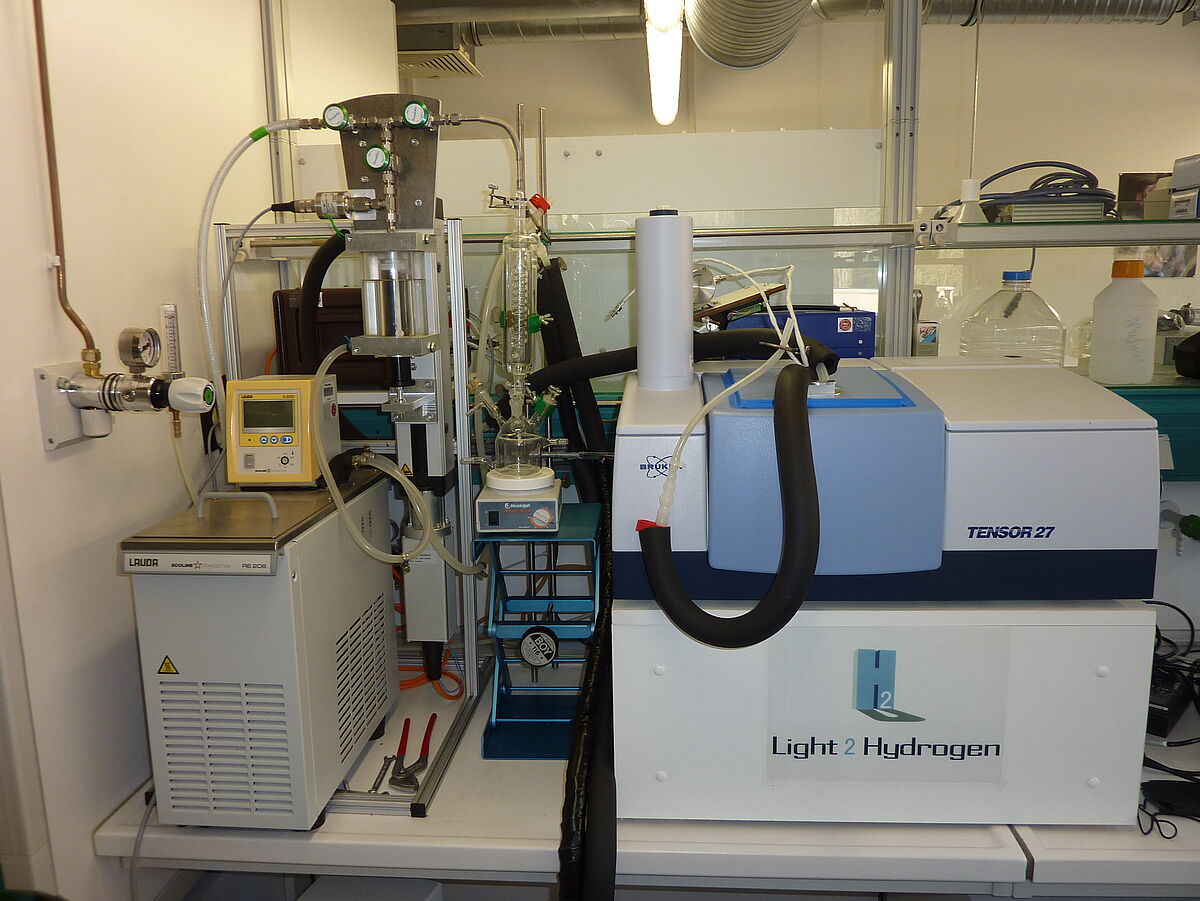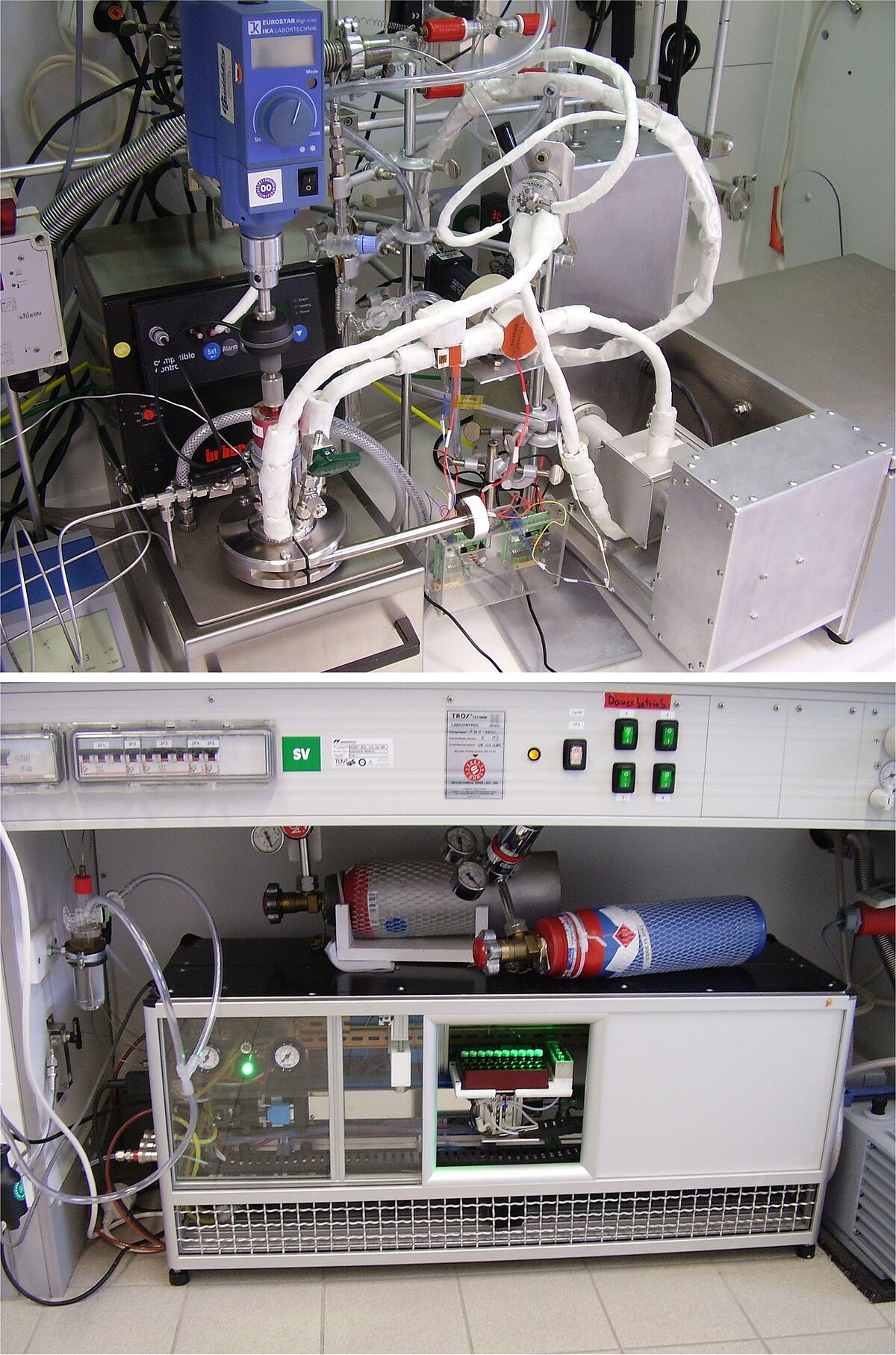On both sites, our lab in the LL&M research building as well as in the Leibniz Institute of Catalysis (LIKAT), our group uses several different experimental setups to study reactions in situ which are of either scientific or industrial relevance in order to gain insight into the underlying reaction mechanisms.
Mechanistic and kinetic in situ studies on homogeneously catalyzed hydroformylations are subject to a collaboration with the Leibniz Institute of Catalysis (LIKAT, Prof. Börner, Dr. Selent). The commonly used semi-batch reactor is coupled to a Bruker TENSOR 27 FTIR spectrometer via a toothed rim micro pump serving to circulate the reaction mixture between the reactor itself and the transmission IR cell. From the FTIR spectra, catalyst species can be detected down to submillimolar concentrations. The setup is designed for pressures up to 50 bar. An automated sampling system for GC analysis allows for a parallel monitoring of organic educts and products.
A second instrumental setup at the LIKAT labs allows in situ spectroscopic investigations of further reactions of large industrial and technical importance such as hydrogenations, aminations and carbonylations.


